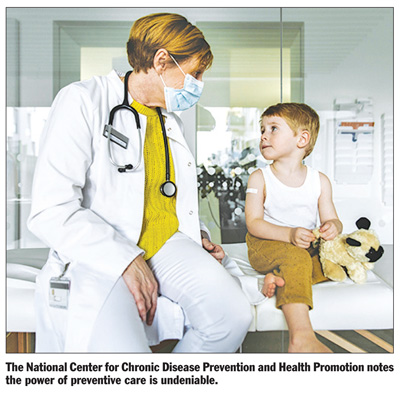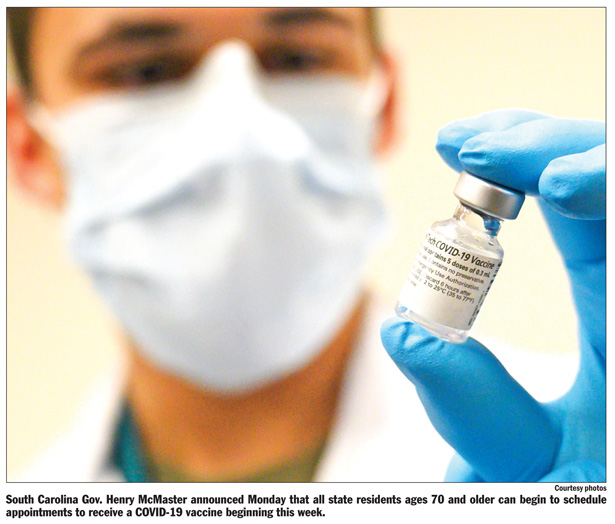Category Archives: Lifestyles
Reflecting on the Keowee Valley area’s Native American heritage

Reflecting on the Keowee Valley area’s Native American heritage
By Dr. Thomas Cloer, Jr.
Special to The Courier
My mother’s name was Grace Moody Cloer. My maternal Moody ancestors came early to the Keowee, “Place of the Mulberries.” My great-great-great-great-grandfather, Daniel Moody (Papa Daniel), and his son, Martin, bought land on the Toxaway River, Devils Fork, Crow Creek, Little River and along the Keowee River.
Mulberries.” My great-great-great-great-grandfather, Daniel Moody (Papa Daniel), and his son, Martin, bought land on the Toxaway River, Devils Fork, Crow Creek, Little River and along the Keowee River.
My Cherokee bloodline is through my great-grandmother Anna Laura Cloer. She was a namesake of her grandmother
You must be logged in to view this content.
Subscribe Today or Login
A day to celebrate

After the COVID-19 pandemic forced the cancellation of the 2020 events, the long-awaited 2021 versions of the Pickens Azalea Festival and Issaqueena Festival in Six Mile went off without a hitch on Saturday, as beautiful weather made for large crowds at both annual spring celebrations. The festivals featured food, music, rides, arts and craft vendors and more fun for the whole family. Photos by Rocky Nimmons and Kerry Gilstrap
The pioneers of Pickens County

By Dr. Thomas Cloer, Jr.
Special to The Courier
For the last two weeks, we have focused on the battle for civil rights nationally in the USA. Now we want to focus more on Pickens County. We obviously can’t focus on all the civil rights leaders. Again, I will focus on some of the pioneers whom I remember.
I entered Clemson University in the 1960s, beginning my work on a masters degree. There had been a young African-American, Harvey Gantt, who had been admitted after suing Clemson, and after having become the first African-American enrolled at a previously all-white institution in South Carolina.
Harvey Gantt: Activist, Pioneer, Architect, Mayor
Harvey Gantt was born in Charleston, where his father was employed at a shipyard. Harvey’s father was active in the National Association for the Advancement of Colored People (NAACP), and the  family discussed discrimination and civil rights openly
family discussed discrimination and civil rights openly
You must be logged in to view this content.
Subscribe Today or Login
Seeds of Change

By Dr. Thomas Cloer, Jr.
Special to The Courier
For celebrating Black History Month, I would like to focus nationally and locally on some pioneers who pushed forward in the nation and in Pickens County when we all were broadening our understanding. Firrst, I need to set the stage by presenting some of the most critical happenings in America that brought on such incredible change.
Brown v. Board of Education, 1954
I remember vividly the presidency of Gen. Dwight Eisenhower from 1953-1961. Eisenhower drew large support from patriotic Americans, my parents included. My parents and grandparents were Roosevelt Democrats. They, and others in the Southern Appalachian Mountains, lived through the Great Depression, where a breakfast often consisted of unsweetened pumpkin. They saw benefits of the New Deal of President Franklin D. Roosevelt. However, most of the mountain people
large support from patriotic Americans, my parents included. My parents and grandparents were Roosevelt Democrats. They, and others in the Southern Appalachian Mountains, lived through the Great Depression, where a breakfast often consisted of unsweetened pumpkin. They saw benefits of the New Deal of President Franklin D. Roosevelt. However, most of the mountain people
You must be logged in to view this content.
Subscribe Today or Login
Old Six Mile fire station to be transformed into coffee shop

By Lauren Pierce
Courtesy The Journal
lpierce@upstatetoday.com
SIX MILE — Coffee lovers around the Six Mile community may soon be able to enjoy their favorite  beverage from an unusual drive-thru location — an old fire station.
beverage from an unusual drive-thru location — an old fire station.
Town council approved a lease at its meeting earlier this month with Jarred and Jenni Brink, who plan to convert the old station at 106 S. Main St. in Six Mile
You must be logged in to view this content.
Subscribe Today or Login
South Carolinians 70 and older can schedule vaccine appointments beginning this week
COLUMBIA — Gov. Henry McMaster and the South Carolina Department of Health and Environmental Control (DHEC) announced that beginning Wednesday, Jan. 13, any South Carolina resident aged 70 or older, regardless of health status or preexisting conditions, can begin
You must be logged in to view this content.
scheduling their appointment to receive COVID-19 vaccine.
Based on COVID-19 vaccine data — doses received, administered, and appointments scheduled — South Carolina officials are confident the majority of people in Phase 1a who want to be vaccinated have either received their shots or have scheduled appointments to do so. There are currently 146,500 doses of Pfizer-BioNTech vaccine in the state, with 82,266 total doses already administered (a 56 percent utilization rate) plus 94,926 appointments scheduled by Phase 1a individuals to receive their vaccine over the next several weeks.
Additional steps to expedite access to additional South Carolinians will be made based on the use of the vaccine, the number of appointments made, and information on vaccine supply.
“Because we’ve seen a dramatic acceleration in vaccine usage and appointments in the last week, we have decided to speed things up again,” said Gov. Henry McMaster. “We know that those 70 and older are at the greatest risk of dying from COVID-19. Making sure they have expedited access to the vaccine will help save lives.”
“While COVID-19 vaccine is currently limited in South Carolina, like it is in all states, our providers continue to receive ongoing weekly shipments of vaccine from the federal government,” said Dr. Brannon Traxler, DHEC Interim Director of Public Health. “When evaluating supply versus demand and as the rate of vaccines coming into the state increases compared to the rate of appointments being scheduled, we believe it is appropriate to begin scheduling appointments for additional South Carolinians. Based on current data, the mortality rate from COVID-19 for those 70 and older in South Carolina is approximately 655 deaths per 100,000 individuals. For those under the age of 70, there are approximately 37 COVID-19 deaths per 100,000 individuals. This is a staggering comparison and illustrates why vaccinating this population next is critically important in our mission to save lives.”
More than 67 percent of COVID-19 deaths in South Carolina have been among those 70 and older.
It’s estimated there are roughly 627,800 South Carolinians aged 70 or older in South Carolina, with many already receiving their vaccine through other Phase 1a eligibility.
What to Know
• Beginning Wednesday, Jan. 13, any South Carolina resident who’s at least 70 years old can schedule their appointment for receiving vaccine
• Vaccine can only be administered by appointment — you can’t walk into a health care facility and ask for vaccine
• Residents will be asked to provide a driver’s license or other form of ID at their appointment that confirms their age and, therefore, their eligibility to receive vaccine
• Individuals eligible to receive vaccine can schedule an appointment using this online resource or by calling the DHEC Care Line at 1-855-472-3432 which currently includes several major hospitals, seven DHEC sites, a DHEC mobile clinic, and 12 Doctor’s Cares locations. An additional 50 locations will be added to this list and available to provide vaccine by the beginning of next week.
• As long-term care facility residents and staff continue to receive their Moderna vaccine through the federal Long-Term Care program, the state can soon redirect some Moderna vaccine from that program and make it available to others
• South Carolina is committed to making the limited supply of COVID-19 available to rural and unserved communities who have residents currently eligible to receive vaccine. This is occurring through:
o an increased number of DHEC mobile clinic locations, where DHEC can bring the vaccine to communities without nearby locations offering vaccine
o working with the South Carolina Vaccine Advisory Committee, Office of Rural Health, Office of Minority Affairs, South Carolina Hospital Association, South Carolina Medical Association, and other state and local partners to establish vaccine provider locations to rural and underserved communities
o continuing to educate and inform rural, minority, and non-White communities about the safety and efficacy of COVID-19 vaccine
• The Pfizer-BioNTech vaccine requires two shots separated by 21 days. The Moderna vaccine requires two shots separated by 28 days. You need to receive both shots of the same product; vaccine brands are not interchangeable.
• Both shots are needed for complete protection against COVID-19. After receiving both shots, the Pfizer-BioNTech and Moderna vaccines are 94-95 percent effective in preventing disease.
• Individuals will receive a vaccine card after receiving their first shot, reminding them when their second shot is due. Most providers are also issuing second-dose appointment reminders to patients by way of phone calls, emails or text messages.
• Getting vaccinated is one of many steps you can take to protect yourself and others from COVID-19. Protection from COVID-19 is critically important because for some people, it can cause severe illness or death.
• Stopping a pandemic requires using all the tools available. Vaccines work with your immune system so your body will be ready to fight the virus if you are exposed. Other steps, like masks and physical distancing, help reduce your chance of being exposed to the virus or spreading it to others.
As the worldwide pandemic and vaccine distribution continue to be quickly evolving situations, South Carolinians are reminded to stay updated by following trusted, verified sources for the latest information. DHEC continues to hold at least twice-weekly updates to our state’s media outlets as part of ongoing efforts to provide the most current information available. For the latest COVID-19 vaccine information, visit scdhec.gov/vaxfacts.
Learn more about the effects of pandemics
Much of the globe was introduced to an assortment of new terms throughout 2020. Phrases like  “social distancing” or “flatten the curve” were commonly used, but these were all preceded by the utterance of the word “pandemic.”
“social distancing” or “flatten the curve” were commonly used, but these were all preceded by the utterance of the word “pandemic.”
What is a pandemic?
The World Health Organization defines a pandemic as a “worldwide spread of a new disease.” The word pandemic comes from the Greek words “pan” (meaning “all”) and “demos” (“people”). When a new disease emerges, most people lack the natural immunity to fight off illness, so the disease can
You must be logged in to view this content.
Subscribe Today or Login
What is herd immunity?
Infectious diseases can strike at any time. Some of them cause relatively minor interruptions to  daily life and often can resolve of their own accord when the body’s immune system mounts a successful defense. Other diseases can cause serious, even life-threatening symptoms or spread rapidly, which makes it essential for medical professionals to help slow down or stop the transmission.
daily life and often can resolve of their own accord when the body’s immune system mounts a successful defense. Other diseases can cause serious, even life-threatening symptoms or spread rapidly, which makes it essential for medical professionals to help slow down or stop the transmission.
What is herd immunity?
Herd immunity is a term that often arises in relation to infectious diseases. Herd immunity has
You must be logged in to view this content.
Subscribe Today or Login
Get the facts about COVID-19 and kids
As 2020 unfolded, the world learned just how quickly the novel coronavirus COVID-19 could  spread. The World Health Organization noted that, by September 2020, nearly 30 million people across the globe had contracted the virus, and that was before the resurgence of the virus in mid-fall.
spread. The World Health Organization noted that, by September 2020, nearly 30 million people across the globe had contracted the virus, and that was before the resurgence of the virus in mid-fall.
While the elderly and those with pre-existing conditions are among the people most vulnerable to
You must be logged in to view this content.
Subscribe Today or Login
Don’t pass up preventive care during the pandemic
Procrastination is not typically considered a good thing. But as the world spent much of 2020 confronting the COVID-19 pandemic, putting certain things on hold became part of the new normal.
 In an effort to reduce infection rates, public health officials with the Centers for Disease Control and
In an effort to reduce infection rates, public health officials with the Centers for Disease Control and  Prevention and the World Health Organization urged people to limit their in person interactions with people outside of their own households. As a
Prevention and the World Health Organization urged people to limit their in person interactions with people outside of their own households. As a
You must be logged in to view this content.
Subscribe Today or Login






































